Once again, Green Herons have decided to nest in our Wetlands. Two pair of herons have again concluded that our Wetlands is suitable for raising their young. We have enough food, shelter, and whatever else it is that herons seek when looking for a place to raise a family.
The birds have chosen the same trees as they had nested in last year although not the exact locations in those trees. The nest building was going at a feverish pace during the second week of June, but things slowed down last week. The heat affects birds’ productivity as well as ours.
As was the case last year, one nest is visible from the Main Wetlands Overlook. This time, the nest is on the left side of the tree as seen from the overlook, and much lower, less than 3 feet above the water. I call this nest the N (north) nest, for short.
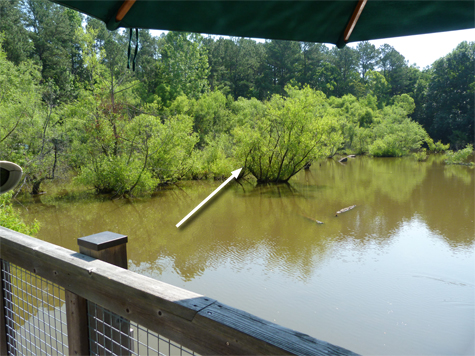
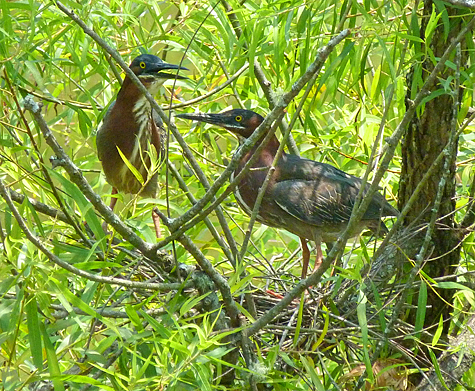
The second nest is on a willow tree closer to the boardwalk on the south side of the Wetlands. This nest is only about two feet from where herons built a nest last year. To distinguish it from the other nest, and for brevity, I call this nest the S (south) nest because it’s on an island just off the boardwalk on the south side of the Wetlands.
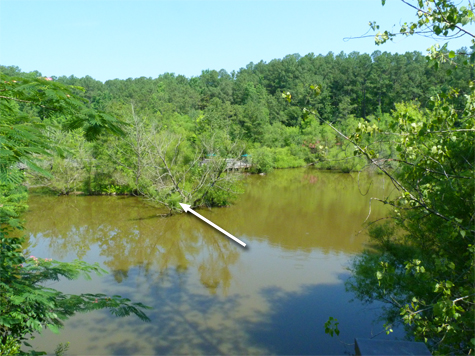
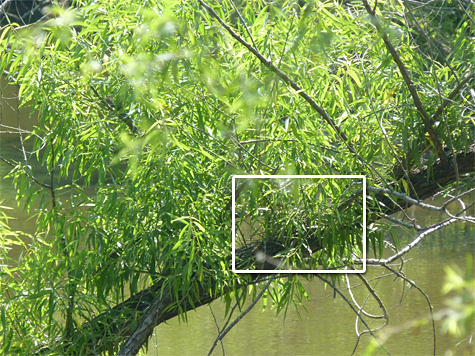
On Friday (6/20), I noticed one of the herons sitting on the N nest. Her bill was pointed upward as she peered out from the willow branches in an obvious incubation pose.
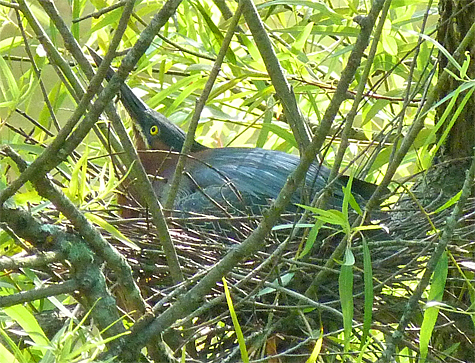
Birds don’t sit on a nest needlessly. She was either suffering from heat exhaustion and needed to sit awhile in the shade, or she was sitting on eggs. There had to be eggs underneath her. To be sure, I wanted to see for myself.
Soon enough, along came the male for the changing of the guard. While both birds stood above and alongside the nest preening and tidying up, I could see what looked to be two eggs. I would guess that there were one or two more eggs out of view.
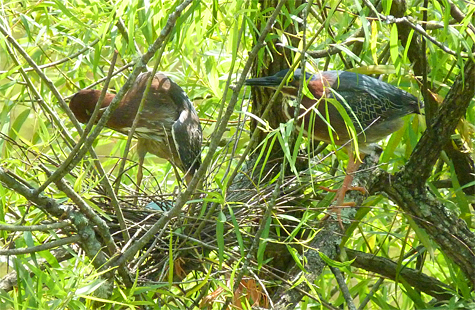
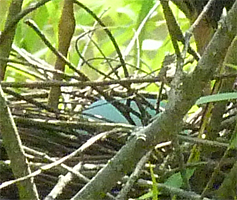
Last year, the tally for birds raised in this tree was four. The current set of eggs, how ever many there are, will hatch in about twenty days. Although it looks as though they’re off to a good start, we’ll have to wait it out to see what develops.
The S nest, the nest on the island on the south side of the Wetlands, is more difficult to see. I searched Friday, but saw no activity around the nest. It could be the heat that has the birds holding back on their nest duties. But, as with the other nest, we’re going to have to wait and see what the birds decide to do.
Saturday morning (6/21), as I do each morning, I walked to both the overlook and the south side boardwalk to check each nest’s progress. The first thing I noticed at the N nest was the lack of birds, neither parent was on or anywhere near the nest. Something was wrong.
I brought my binoculars up to my eyes and glassed the nest, no eggs. I stood on a nearby bench to give myself a higher perspective, still no eggs. What was going on?
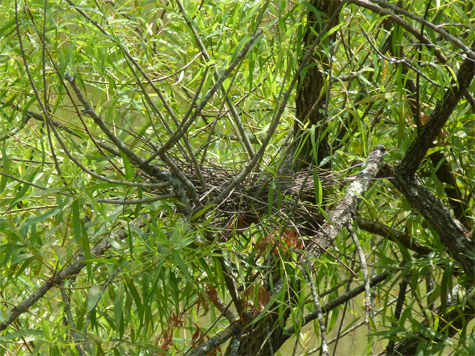
The evening before, as I was closing the outdoor areas of the Museum, I heard a very loud and high-pitched squawk from one of the herons. I often hear members of the two pairs that live in our Wetlands squawk at each other as their respective territories are breached. But this was an unusually loud and desperate squawk. And, immediately following the squawking, I saw a large, winged shadow cross the path on the north side of the Wetlands but didn’t see what cast the shadow.
I regret not going over right then to see what had happened. There was, of course, nothing that I could have done, but I may have witnessed whatever it was that caused the herons to react the way they did. It may simply have been another territorial dispute between the herons, whatever happened to the eggs, happening later that night. But I’ll never know for sure.
One heron showed up later in the day on Saturday, landed on a nearby tree, but didn’t stay long. Have both nests been abandoned due to predation? I’ll be reporting back to you soon, but I’m not optimistic.